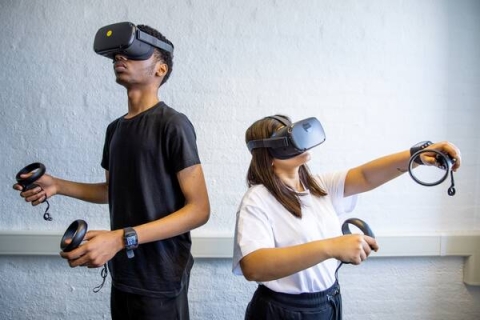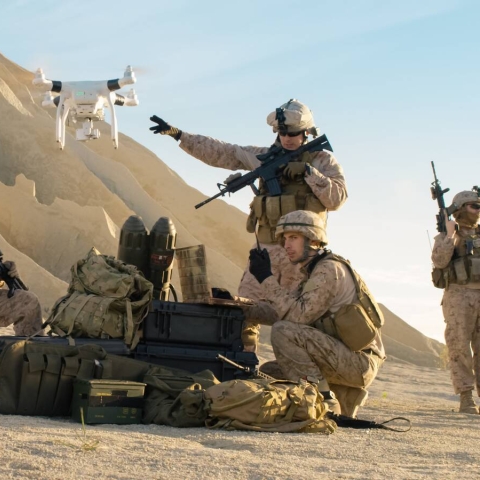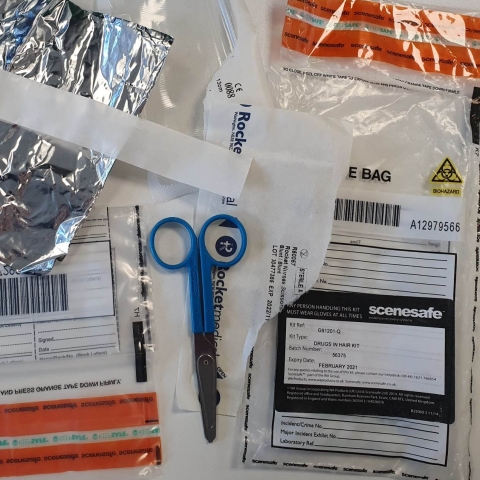

Immersive virtual reality (VR) technology is being used in a new study to understand how and why burglars work in pairs or groups.
27 March 2023
4 min read
Immersive virtual reality (VR) technology is being used in a new study to understand how and why burglars work in pairs or groups.
Students at the University of Portsmouth are being asked to become burglars for the day. Student participant pairs will be tasked with completing a ‘virtual burglary’, during which conversations, actions and physiological measures will be recorded and analysed. The University of Portsmouth believes this study will be the first to use VR to explore joint decision-making in offender pairs.
Working in collaboration is especially common for crimes such as burglary and robbery. However, despite an increase in research on decision-making processes in residential burglary, until now there has been little focus on the role of joint decision-making during the completion of an offence.
Lead researcher Dr Amy Meenaghan, from the School of Criminology and Criminal Justice Studies, University of Portsmouth says: “Due to its invasive nature we know that burglary is one of the crimes that the public fears the most. Uncovering decision-making processes in this offending behaviour can often be ethically and practically problematic. The use of VR is proving to be an invaluable tool for observing and recording offence-related behaviour.”
While rates of residential burglary have steadily decreased since 2011, nearly 700,000 burglaries or attempted burglaries were committed in the UK in 2019 (Office for National Statistics, 2019). The impact on the victim can be significant. Both the financial cost to the victim (estimated to be around £6,000 per burglary) and the emotional toll highlight the need for evidence-based interventions and crime prevention strategies.
This study aims to assess the effectiveness of using a virtual environment (VE) to understand the role of collaborative decision-making in target selection and the search of a property. The next stage of the research will use the findings to refine the simulated environment for future research but this time with experienced burglar co-offending pairs.
More research in this area will have positive implications for crime prevention initiatives and the rehabilitation of offenders.
Dr Amy Meenaghan, School of Criminology and Criminal Justice Studies
Dr Meenaghan has already worked with VR-based research and shed light on various aspects of burglary, from the decision to offend to selecting and targeting certain properties.
She says: “We know that residential burglary is an offence that is often undertaken in pairs or in groups. Those who co-offend have been found to be less likely to be arrested, more likely to re-offend, and to continue to offend for a longer period of time. Co-offending is the norm for the vast majority of delinquent youths, as well as for many adult offenders. So, it’s important to consider not only the individual thoughts of those who offend, but also the role that peers play in influencing decision-making. More research in this area will have positive implications for crime prevention initiatives and the rehabilitation of offenders.”
Iris van Sintemaartensdijk from the University of Twente says: “This research aims to extend our understanding of how others can influence offence-related behaviour by focussing on interactions in and around the scene of the crime. Through observing peer interactions while undertaking a mock burglary, we can better assess the nature of the peer relationship, situational differences, and the role of shared experience.”
The students will enter the simulated environment using virtual headsets. The specially designed software, allows participant pairs to interact with the VE simultaneously. It consists of a residential property that has been created to replicate a typical target for burglary.
Student participants will be briefed on the burglary task and will be required to work together to complete the virtual burglary in such a way as to obtain a realistic ‘haul’ of goods, and to avoid detection. They will be asked to communicate with their partner during the task to assist with the successful completion of the burglary. The use of virtual reality will allow for participants to respond naturally to cues presented in the environment, allowing for observation of behaviour and interactions in real-time. Participant immersion and presence will be assessed using physiological measures for example, a watch is measuring heart rate and subjective measures.
Results produced by the VR software will record interactions with the virtual environment (total time for completion of the burglary, time spent in specific areas of the property, navigation around the target, items stolen). These will then be analysed and help to uncover the relationship between peer interactions, behaviour, and decision-making. It will also illuminate the nature and extent of interactions with the environment (e.g. route taken in the property, perception of valuable items for theft).
The combined analysis will be used to inform the extent to which immersive VR can be used to better understand the role of interaction, discussion, and influence during the completion of a burglary task. The findings will be used to refine the VE for future use with experienced burglar pairs.
Researchers hope that this study will ultimately help inform future crime prevention and rehabilitation initiatives.
You might also like...
New AI project to save lives on the battlefield
21 March 2023
3 minutes

New research launched into excess plastic use at police crime scenes
15 February 2023
3 minutes

Keeping young people safe from online harm, extremism and crime
7 February 2023
3 minutes

